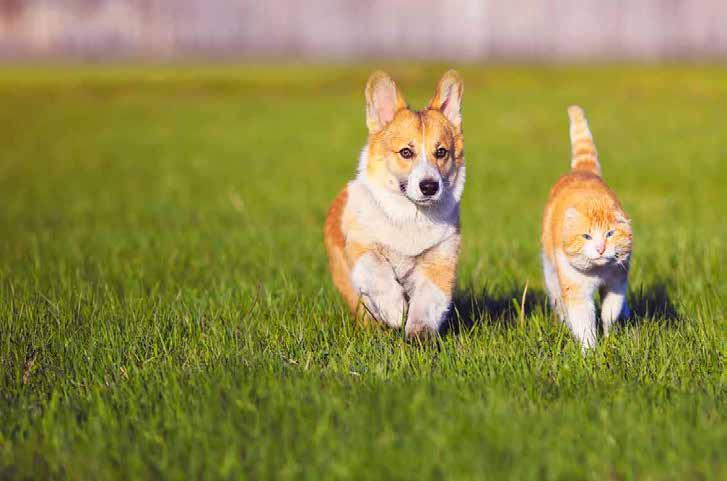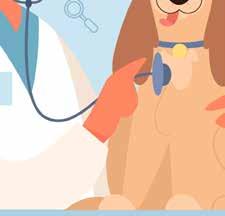
2 minute read
NOSE TO TAIL VETERINARY EXAMINATIONS
from THE WAG magazine
By Caroline A. O’Sullivan DVM MS
Whether the veterinary practice you go to is traditional or alternative, the importance of going nose to tail using all senses (sight, smell, touch, taste, hearing) is to achieve the Gold Standard of Evidence Based Medicine (EBM). Evidence based medicine is the conscientious, explicit, judicious, and reasonable use of modern, best evidence in making decisions about the care of individual patients. EBM integrates clinical experience and patient values with the best available research information.
Advertisement
When you take your dog in for a nose to tail veterinary exam (similar to a human’s physical), the following animal body systems are examined.


• General appearance
• Integument (skin/coat)
• Musculoskeletal
• Circulation
• Respiration
• Digestive
• Urogenital

• Eyes
• Ears
• Neurological system
• Lymph nodes
• Mucous membranes
This requires all the senses of the veterinarian to detect abnormalities, changes, concerns. Many of the systems are observed and tested simultaneously during palpation.

Veterinary examinations include temperature, pulse, and respiration, also referred to as TPR. Many times, these values are taken as a raw number and provide the opportunity to investigate the respiratory, cardiovascular, and immune systems (i.e., checking for heart murmurs, crackles or wheezing in the lungs and trachea). Recording a CRT (capillary refill time) to check for circulation and oxygenation, requires applying slight pressure to the gums to check for the pressure point to go white and return to color in two seconds. This part of the exam gives opportunity to check dental conditions, such as plaque, tartar, gum disease, or oral conditions, such as masses and ulcers. And while the veterinarian is around the oral cavity, the HEENT (head, ears, eyes, nose, and throat) system can be evaluated. Full examinations of HEENT may require otoscopes for ears, pen lights for ocular exam, open mouth and palpation for throat.
During a physical examination, the veterinarian’s hands-on portion is vital for assessing: the general appearance function, the ventrum (underside of the patient) may also be palpated. Lumps and bumps, lick staining, urination marks, evidence of loose stool and anal gland swelling may be discovered and discussed with the owner.
It is important to keep in mind that every patient is different and requires individual care. The decision on exam team develop their own techniques. Remember, as a pet parent, your dog is depending on you to communicate your observations of his behavior (changes in energy, activity, appetite, ability to move comfortably, groaning, difference in behavior) to your veterinarian. Be proactive in caring for your dog’s health. of the pet; integument (checking for rashes, dryness, itching, discharges); lymph nodes (five sets can be palpated externally); musculoskeletal (bones, muscle, fat tissue); and assigning a BCS (body condition score), which helps direct conversations with owners regarding diet, exercise, and fitness. The hands-on physical may allow the veterinarian to feel for areas of heat and swelling, gently bend the knees and checking the joints.
When performing the hand movement down the pet’s body to check the skin, musculoskeletal system and nerve techniques and the depth of each physical examination is ultimately that of the veterinarian. All the above-mentioned exam ideas and techniques require pet involvement and cooperation to a certain degree. Many pets have areas of their bodies they do not want touched, and they may be uncomfortable, scared, or surprised. The ability to practice kind, compassionate, gentle restraint is a skill learned with a vast amount of experience. This does take time and patience from the veterinarian, pet parents, and support team. Each veterinarian and support
Caroline A. O’Sullivan DVM MS, is a Fear Free Certified Veterinary practitioner and owner of Holistic Veterinary Care & Acupuncture Center, Dewey, AZ, with memberships in IVAPM (International Veterinary Academy of Pain Management), Farm Sanctuary, Best Friends Animal Society, and Institute for Responsible Technology.
928-925-4130 droholisticvetservices.com







